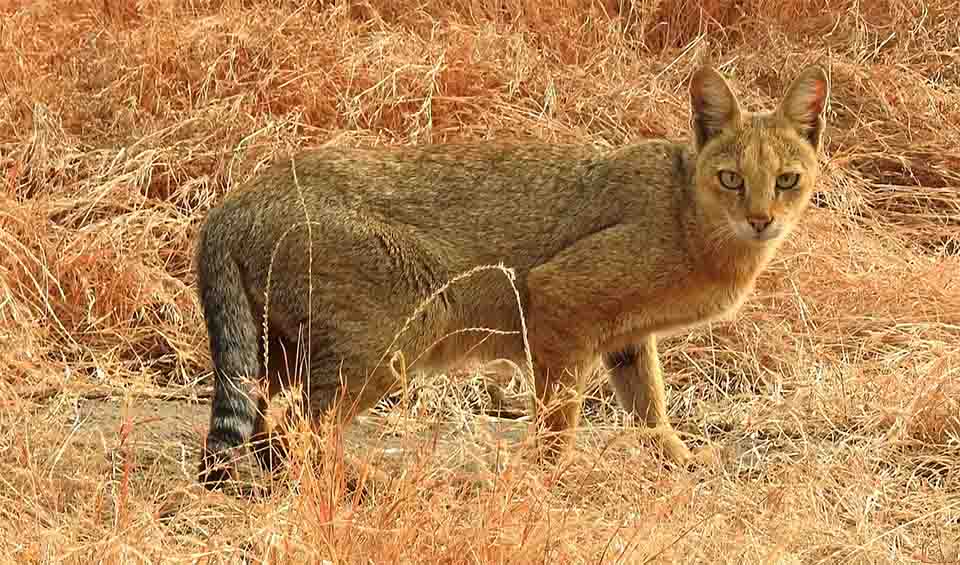Known for its plain yet striking coat, which ranges from reddish to sandy yellow in the southern populations and various shades of gray in the northern regions, this medium-sized cat embodies the adaptability and resilience required to thrive in diverse environments, from wetlands to savannas and forests.
Distinctive light brown stripes adorn the limbs of the jungle cat, and its tail features several dark rings culminating in a dark tip, adding a touch of elegance to its otherwise uniform coat. This subtle patterning not only enhances its beauty but also aids in camouflage, allowing it to blend seamlessly with the tall grasses and reeds that characterize its habitat.
One of the most intriguing aspects of jungle cat behavior is its method of communication through scent marking. When these cats rub their cheeks against objects, they deposit saliva, which contains unique scent markers. This behavior serves multiple purposes, including marking territory, signaling reproductive status, and creating familiar scents within their range. Additionally, jungle cats engage in cheek-rubbing against scent marks left by others and perform this action frequently with potential mates, fostering social bonds and ensuring recognition among individuals.
Contrary to the nocturnal habits of many wild cats, jungle cats are primarily diurnal, with peak activity occurring during the cooler hours of the morning and late afternoon. This adaptation allows them to exploit a niche where competition with nocturnal predators is minimized. Their hunting strategy is a testament to their agility and precision, as they stalk and pounce on a variety of prey with remarkable efficiency.
The diet of the jungle cat is as varied as its habitat, predominantly comprising small rodents like mice, rats, and voles, which constitute the bulk of its diet. However, its opportunistic feeding habits also include insects, birds, frogs, lizards, and hares. In areas closer to human habitation, they may also prey on poultry, which can sometimes bring them into conflict with people.
Distribution
 Afghanistan
Afghanistan Armenia
Armenia Azerbaijan
Azerbaijan Bangladesh
Bangladesh Bhutan
Bhutan Cambodia
Cambodia China
China Egypt
Egypt Georgia
Georgia India
India Iran
Iran Iraq
Iraq Israel
Israel Jordan
Jordan Kazakhstan
Kazakhstan Kyrgyzstan
Kyrgyzstan Laos
Laos Lebanon
Lebanon Myanmar
Myanmar Nepal
Nepal Pakistan
Pakistan Russia
Russia Sri Lanka
Sri Lanka Syria
Syria Tajikistan
Tajikistan Thailand
Thailand Turkey
Turkey Turkmenistan
Turkmenistan Uzbekistan
Uzbekistan Vietnam
VietnamAnything we've missed?
Help us improve this page by suggesting edits. Glory never dies!
Suggest an editGet to know me
Terrestrial / Aquatic
Altricial / Precocial
Polygamous / Monogamous
Dimorphic (size) / Monomorphic
Active: Diurnal / Nocturnal
Social behavior: Solitary / Pack / Herd
Diet: Carnivore / Herbivore / Omnivore / Piscivorous / Insectivore
Migratory: Yes / No
Domesticated: Yes / No
Dangerous: Yes / No





